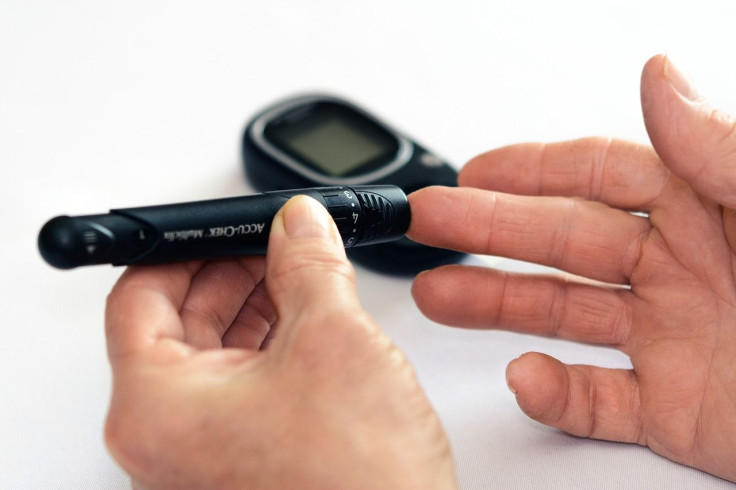Youth With Diabetes Face Life-Long Issues. Part 1

More young people are being diagnosed with diabetes than ever before, according to the 2020 National Diabetes Statistics Report, a publication from the Centers for Disease Control and Prevention.
And that means more young people with diabetes are at risk for developing complications at a younger age. And these are serious complications, like vision and kidney problems. A large study found that a significant percentage of those diagnosed under age 20 were at risk, or already had, such complications.
In 2015, about 193,000 children and adolescents were diagnosed with diabetes, up from 187,000 diagnosed in 2009, said Robert Gabbay, MD, PhD, in an interview with Medical Daily. Dr. Gabbay is the chief scientific and medical officer for the American Diabetes Association.
The surprising news is that the increase is not just in type 1 diabetes, which was once even called “juvenile diabetes,” but type 2, which has historically been seen in adults and not kids and teens.
“The trend we’re seeing in both type 1 and type 2 diabetes in young people is a growing clinical and public health concern,” said Dr. Gabbay.
The big change has occurred with type 2 diabetes, once known as “adult-onset diabetes.” In 2018 alone, 23,000 people under age 20 were diagnosed with type 2 diabetes, according to the 2020 statistics report. Obesity is a common denominator among this group.
These figures date to 2014, when 5,758 children and teens aged 10 to 19 were diagnosed with type 2 diabetes, according to the SEARCH for Diabetes in Youth study. The SEARCH study began in 2000 and will continue through at least 2020.
The study has followed more than 27,000 participants, including 1,746 young people diagnosed before the age of 20 with type 1 diabetes, and 272 diagnosed with type 2 diabetes.
SEARCH found that those with type 2 diabetes diagnosed under age 20 are more likely to develop signs of kidney, nerve and eye disease, compared to people with type 1 who are the same age, said Dr. Gabbay.
“Researchers have examined many factors, including glucose control, body mass index, waist-to-height ratio and blood pressure, but there were no specific indications as to why people with type 2 developed more complications than those with type 1. By about age 21, roughly 75 percent of the participants with type 2 had at least one complication from diabetes or were at high risk for a complication,” he said.
A review of research from the SEARCH study from 2003 to October 2020, is available at https://www.searchfordiabetes.org/dsp_GenCitationsMain.cfm] .
In 2014, the SEARCH study reported increases of type 2 diabetes among black, white and Hispanic children, but not among Asian-Pacific Islander and American Indian children.
At that time, the SEARCH study authors speculated that the uptick in type 2 diabetes may result from “minority population growth, obesity, exposure to diabetes in utero and perhaps endocrine-disrupting chemicals.” A 2014 New York Times article, reporting on the SEARCH study’s findings that year, noted that type 2 diabetes “is thought to be brought on by a genetic predisposition to poor insulin action and secretion, often exacerbated by obesity and inactivity.”
Type 2 Diabetes and Earlier Complications
Type 2 diabetes occurs when the body doesn’t use insulin efficiently. Insulin, a hormone produced by the pancreas, helps the body process nutrition from food. Without the right amount of insulin, the body can’t get the nutrition it needs and instead converts food to extra sugar, or glucose, that spills into the bloodstream. Higher-than-normal blood glucose levels can lead to both short- and long-term health issues or complications. For people living with type 2 diabetes at younger ages, such complications may develop earlier in life.
Unlike type 1 diabetes -- an unpreventable autoimmune condition that occurs when the body attacks the pancreas cells that produce insulin -- type 2 diabetes is often linked to weight gain. Excess weight causes the body to use the insulin it makes less efficiently. Type 2 can often be controlled through diet and exercise; with less weight on the body, insulin operation is more likely to normalize.
“Obesity in youth is the primary contributor to the development of insulin resistance,” Karl Nadolsky, DO, told Medical Daily. Dr. Nadolsky is a spokesperson for the American Association of Clinical Endocrinologists (AACE) and a clinical endocrinologist at Spectrum Health in Grand Rapids, Mich.
“When adolescents with obesity develop type 2 diabetes, this insulin resistance is worse than for their peers with obesity without diabetes, making it more difficult to treat with hopes of further remission.”
Click here for Part 2: Children and Type 2 Diabetes: Fixing the Problem
Cheryl Alkon is a seasoned health and medical writer based in Massachusetts. She is the author of Balancing Pregnancy With Pre-Existing Diabetes: Healthy Mom, Healthy Baby.
Published by Medicaldaily.com



























